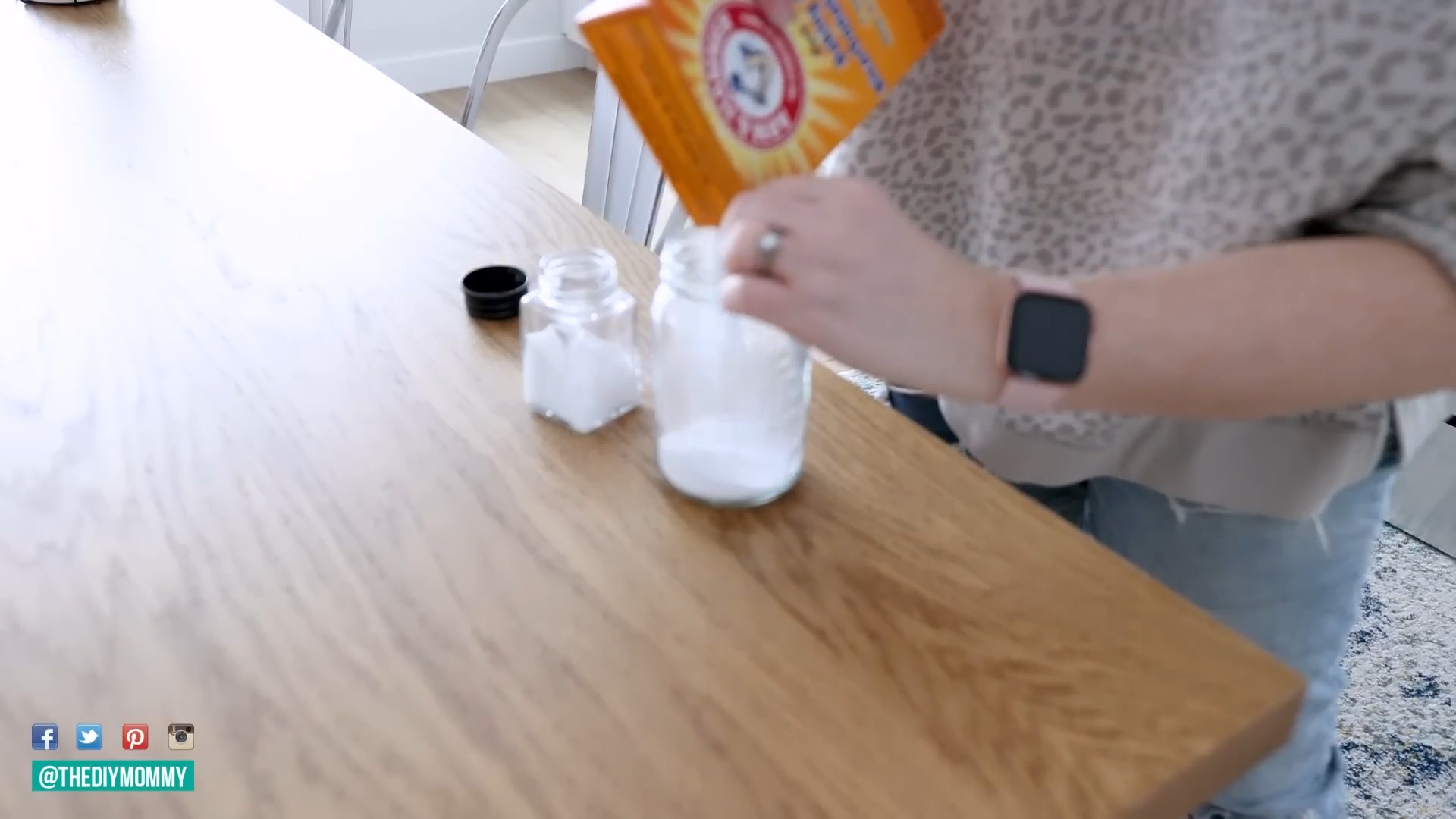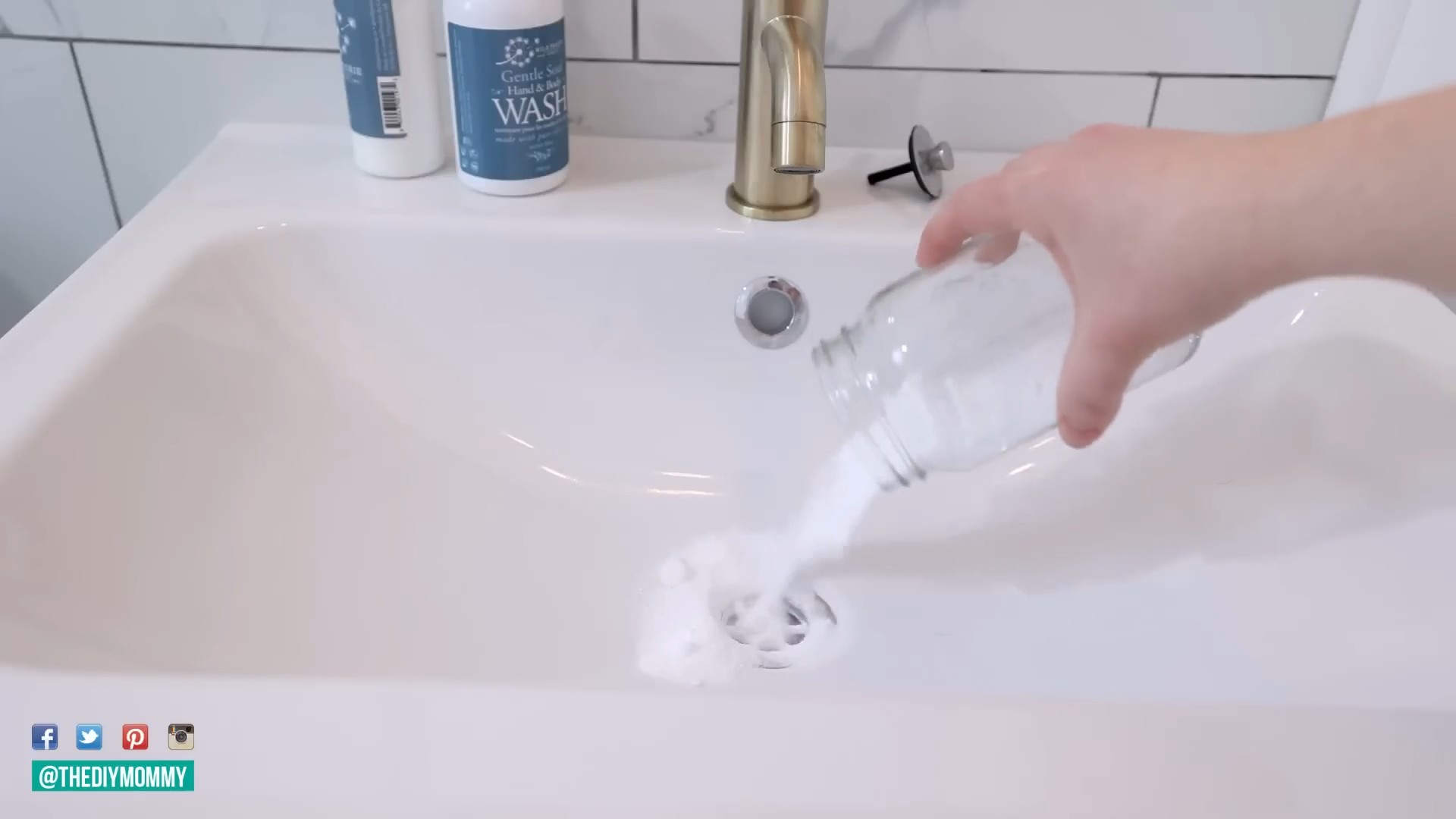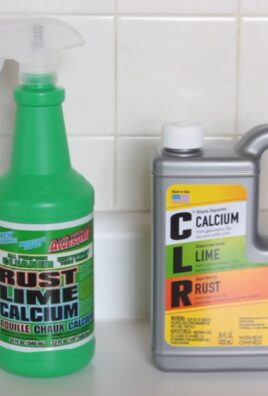Baking Soda Cleaning Hacks: Unleash the Power of This Kitchen Staple! Are you tired of spending a fortune on harsh chemical cleaners that promise the world but often fall short? I know I was! That’s why I’m so excited to share some incredible DIY cleaning secrets using something you probably already have in your pantry: baking soda!
Baking soda, or sodium bicarbonate, isn’t just for baking delicious treats. Its cleaning prowess has been known for centuries! From ancient Egyptians using it as a cleaning agent to our grandmothers relying on it for everything from scrubbing sinks to deodorizing refrigerators, baking soda has a rich history as a versatile and effective cleaner.
But why should you embrace these baking soda cleaning hacks today? Well, for starters, it’s incredibly affordable and readily available. More importantly, it’s a natural and non-toxic alternative to many commercial cleaners, making it safer for your family, pets, and the environment. Plus, it’s surprisingly effective at tackling a wide range of cleaning tasks, from removing stubborn stains to eliminating unpleasant odors. In this article, I’m going to show you some of my favorite and most effective baking soda cleaning hacks that will transform the way you clean your home. Get ready to ditch the harsh chemicals and embrace the power of baking soda!

Unlocking the Cleaning Powerhouse: Amazing Baking Soda Hacks You Need to Know!
Hey there, fellow cleaning enthusiasts! I’m about to let you in on a little secret weapon that’s probably already sitting in your pantry: baking soda! Forget those expensive, chemical-laden cleaners – baking soda is a natural, effective, and budget-friendly alternative for tackling a surprising number of household messes. I’ve been using these hacks for years, and I’m excited to share them with you. Get ready to be amazed!
Baking Soda Basics: Why It Works
Before we dive into the hacks, let’s quickly understand why baking soda (sodium bicarbonate) is such a cleaning superstar. It’s mildly alkaline, which means it can dissolve dirt, grease, and grime. It’s also a gentle abrasive, perfect for scrubbing without scratching. Plus, it’s a natural deodorizer, absorbing odors instead of just masking them. Pretty cool, right?
Hack #1: Freshening Up Your Fridge
A smelly fridge is a common problem, but baking soda is the perfect solution.
What you’ll need:
* Baking soda
* A small, open container (like a bowl or jar)
Step-by-step instructions:
1. Prepare the baking soda: Pour about half a cup of baking soda into your open container.
2. Place it in the fridge: Put the container in the back of your fridge, where it won’t get knocked over.
3. Replace regularly: Replace the baking soda every month (or sooner if it starts to absorb a lot of odors). You can then use the old baking soda for cleaning other areas, like your drains!
Hack #2: Deodorizing Your Carpets and Rugs
This is one of my favorite tricks for keeping my carpets fresh and clean, especially with pets!
What you’ll need:
* Baking soda
* A shaker (like an old spice container or a baking soda dispenser)
* A vacuum cleaner
Step-by-step instructions:
1. Prepare the baking soda: Fill your shaker with baking soda. You can add a few drops of your favorite essential oil (like lavender or lemon) for an extra boost of freshness, but it’s totally optional.
2. Sprinkle the baking soda: Generously sprinkle the baking soda over your carpets and rugs.
3. Let it sit: Let the baking soda sit for at least 15-30 minutes. For really stubborn odors, you can leave it overnight.
4. Vacuum thoroughly: Vacuum up all the baking soda. Make sure to go over the area a few times to get everything.
Hack #3: Cleaning Your Oven (Without Harsh Chemicals!)
Oven cleaning is the worst, but baking soda makes it so much easier and safer.
What you’ll need:
* Baking soda
* Water
* A spray bottle
* A sponge or scrub brush
* Rubber gloves (optional, but recommended)
Step-by-step instructions:
1. Prepare the baking soda paste: Mix about ½ cup of baking soda with enough water to form a thick paste.
2. Coat the oven: Spread the paste all over the inside of your oven, avoiding the heating elements. I usually wear gloves for this part, as it can get a little messy.
3. Let it sit overnight: This is the key! Let the paste sit overnight (or for at least 12 hours). This gives the baking soda time to loosen the baked-on grime.
4. Scrub and wipe: The next day, use a sponge or scrub brush to scrub away the loosened grime. You might need to use a little elbow grease for stubborn spots.
5. Rinse thoroughly: Use a spray bottle filled with water to rinse out the oven. Wipe away any remaining baking soda residue with a clean, damp cloth. You might need to rinse a few times to get it all.
Hack #4: Unclogging Drains
Say goodbye to expensive drain cleaners! Baking soda and vinegar are a powerful (and natural) drain-clearing duo.
What you’ll need:
* Baking soda
* White vinegar
* Hot water
Step-by-step instructions:
1. Pour in the baking soda: Pour about ½ cup of baking soda down the drain.
2. Add the vinegar: Follow with 1 cup of white vinegar.
3. Let it fizz: Let the mixture fizz for about 30 minutes. You’ll probably hear some bubbling and hissing – that’s the baking soda and vinegar reacting.
4. Flush with hot water: After 30 minutes, flush the drain with a pot of boiling water.
Important Note: Be careful when pouring boiling water!
Hack #5: Cleaning Grout
Grimey grout can make your whole bathroom look dirty. Baking soda to the rescue!
What you’ll need:
* Baking soda
* Water
* An old toothbrush or grout brush
* Spray bottle (optional)
Step-by-step instructions:
1. Make a paste (optional): You can either make a paste of baking soda and water (like we did for the oven) or just sprinkle dry baking soda onto the grout lines. I find the paste works a little better for really tough stains.
2. Apply the baking soda: Apply the baking soda (paste or dry) to the grout lines.
3. Scrub: Use an old toothbrush or grout brush to scrub the grout lines.
4. Rinse: Rinse the grout lines with water. You can use a spray bottle to make this easier.
5. Dry: Wipe the area dry with a clean cloth.
Hack #6: Polishing Silverware
Tarnished silverware can look dull and unappealing. Baking soda can bring back its shine!
What you’ll need:
* Baking soda
* Aluminum foil
* Boiling water
* A container large enough to hold your silverware
* A soft cloth
Step-by-step instructions:
1. Line the container: Line the container with aluminum foil, shiny side up.
2. Add baking soda: Add 1-2 tablespoons of baking soda per cup of water to the container.
3. Pour in boiling water: Carefully pour boiling water into the container.
4. Submerge the silverware: Place your silverware in the container, making sure it touches the aluminum foil.
5. Let it sit: Let the silverware sit for 2-5 minutes, or until the tarnish disappears. You might see some bubbling and a sulfurous smell – that’s normal!
6. Remove and rinse: Remove the silverware from the container and rinse it with water.
7. Dry and polish: Dry the silverware with a soft cloth. You might need to polish it a little to remove any remaining residue.
Hack #7: Removing Stains from Coffee Mugs
Coffee and tea stains can be tough to remove from mugs, but baking soda makes it a breeze.
What you’ll need:
* Baking soda
* Water
* A sponge or cloth
Step-by-step instructions:
1. Make a paste: Make a paste of baking soda and water.
2. Apply the paste: Apply the paste to the stains inside the mug.
3. Scrub: Scrub the stains with a sponge or cloth.
4. Rinse: Rinse the mug thoroughly with water.
Hack #8: Cleaning Burnt Food from Pots and Pans
Burnt food stuck to the bottom of your pots and pans? Don’t despair! Baking soda can help.
What you’ll need:
* Baking soda
* Water
* A sponge or scrub brush
Step-by-step instructions:
1. Coat the bottom of the pan: Sprinkle a generous amount of baking soda over the burnt food.
2. Add water: Add enough water to cover the burnt food.
3. Bring to a boil: Bring the water to a boil and then simmer for 15-20 minutes.
4. Let it cool: Let the pan cool slightly.
5. Scrub: Use a sponge or scrub brush to scrub away the loosened burnt food. You might need to use a little elbow grease for stubborn spots.
Hack #9: Freshening Up Your Shoes
Smelly shoes? Baking soda to the rescue!
What you’ll need:
* Baking soda
* Socks or small cloth bags (optional)
Step-by-step instructions:
1. Pour baking soda into shoes:

Conclusion
So, there you have it! These baking soda cleaning hacks are more than just simple tricks; they’re a gateway to a cleaner, fresher, and healthier home. We’ve explored how this humble ingredient can tackle everything from stubborn oven grime to dull laundry, all without the harsh chemicals found in many commercial cleaners. The beauty of baking soda lies in its versatility, affordability, and eco-friendliness. It’s a win-win-win!
Why is this a must-try? Because it simplifies your cleaning routine, saves you money, and reduces your exposure to potentially harmful substances. Imagine replacing a whole cabinet full of specialized cleaners with one simple box of baking soda. Think of the money you’ll save! And consider the peace of mind knowing you’re creating a safer environment for your family and pets.
But the fun doesn’t stop here! Feel free to experiment with these baking soda cleaning hacks. For instance, if you’re cleaning your grout, try adding a few drops of tea tree oil to the baking soda paste for an extra boost of disinfecting power. Or, if you’re freshening up your mattress, sprinkle baking soda mixed with lavender essential oil for a calming scent. The possibilities are endless!
Don’t be afraid to get creative and tailor these hacks to your specific needs. Maybe you have a particularly stubborn stain on your carpet, or perhaps you’re looking for a natural way to deodorize your refrigerator. Baking soda is your secret weapon!
We’re confident that once you try these baking soda cleaning hacks, you’ll be amazed by the results. They’re easy, effective, and environmentally friendly – what’s not to love?
Now, it’s your turn! We encourage you to give these DIY cleaning solutions a try. See for yourself how baking soda can transform your cleaning routine and leave your home sparkling. And most importantly, we want to hear about your experience! Share your tips, tricks, and success stories in the comments below. Let’s build a community of baking soda enthusiasts and help each other create cleaner, healthier homes. What are you waiting for? Grab that box of baking soda and get cleaning! Let us know which baking soda cleaning hacks worked best for you!
Frequently Asked Questions (FAQs)
What exactly *is* baking soda, and why is it such a good cleaner?
Baking soda, also known as sodium bicarbonate, is a naturally occurring mineral compound. Its chemical formula is NaHCO3. It’s a mild alkali, which means it can react with acids to neutralize them. This is why it’s so effective at deodorizing – it neutralizes the acidic compounds that often cause unpleasant smells. Additionally, its slightly abrasive texture makes it a gentle but effective scrubbing agent, perfect for removing dirt and grime without scratching surfaces. It’s also a natural and non-toxic substance, making it a safe alternative to many harsh chemical cleaners.
Is baking soda safe to use on all surfaces?
While baking soda is generally safe, it’s always a good idea to test it in an inconspicuous area first, especially on delicate surfaces like polished wood or certain types of stone. Avoid using baking soda on aluminum, as it can cause discoloration. For gold plated items, it is best to avoid using baking soda as it can scratch the surface. Also, be cautious when using it on painted surfaces, as excessive scrubbing can potentially dull the finish. When in doubt, err on the side of caution and test a small area first.
How does baking soda compare to other natural cleaners like vinegar or lemon juice?
Baking soda, vinegar, and lemon juice are all excellent natural cleaners, but they work in different ways. Vinegar and lemon juice are acidic, making them effective at dissolving hard water stains, soap scum, and mineral deposits. Baking soda, on the other hand, is alkaline and excels at neutralizing odors, removing grease, and gently scrubbing away dirt. They can even be used together in some cleaning applications, but it’s important to note that mixing baking soda and vinegar in a closed container can create pressure due to the release of carbon dioxide gas. Use caution when combining them.
Can I use baking powder instead of baking soda for cleaning?
No, baking powder is not a suitable substitute for baking soda in cleaning applications. Baking powder contains baking soda, but it also includes an acidifying agent (like cream of tartar) and a drying agent. This combination is designed to create a leavening effect in baking, not to clean. Using baking powder instead of baking soda will not provide the same cleaning power or deodorizing benefits.
How long does baking soda last once opened?
An unopened box of baking soda can last for several years if stored in a cool, dry place. Once opened, it’s best to use it within six months to a year for optimal cleaning and deodorizing effectiveness. To test if your baking soda is still active, pour a small amount of vinegar into a bowl and add a spoonful of baking soda. If it fizzes vigorously, it’s still good to use. If the fizzing is weak or nonexistent, it’s time to replace it.
What are some other creative uses for baking soda besides cleaning?
Baking soda has a wide range of uses beyond cleaning! It can be used as a natural antacid to relieve heartburn, as a toothpaste alternative to whiten teeth (use sparingly), as a bath soak to soothe skin irritations, and even as a dry shampoo to absorb excess oil from your hair. It’s a truly versatile product with countless applications.
How do I store baking soda properly to maintain its effectiveness?
To keep your baking soda fresh and effective, store it in an airtight container in a cool, dry place. This will prevent it from absorbing moisture and odors from the surrounding environment. Avoid storing it near strong-smelling substances, as it can absorb those odors.
Is it safe to use baking soda around pets and children?
Yes, baking soda is generally considered safe to use around pets and children. It’s non-toxic and doesn’t contain harsh chemicals. However, it’s always a good idea to keep it out of reach of young children to prevent accidental ingestion. While a small amount of ingested baking soda is unlikely to cause serious harm, large quantities can lead to digestive upset.
What if I accidentally get baking soda in my eyes?
If you accidentally get baking soda in your eyes, rinse them immediately with plenty of cool water for at least 15 minutes. If irritation persists, consult a doctor.
Can baking soda help with mold removal?
Baking soda can be helpful in preventing mold growth and removing light mold stains. To use it for mold removal, create a paste of baking soda and water, apply it to the affected area, let it sit for a few minutes, and then scrub it away with a brush. Rinse the area thoroughly with water. For severe mold infestations, it’s best to consult a professional mold remediation service. Baking soda is more effective as a preventative measure than a cure for established mold problems.





Leave a Comment